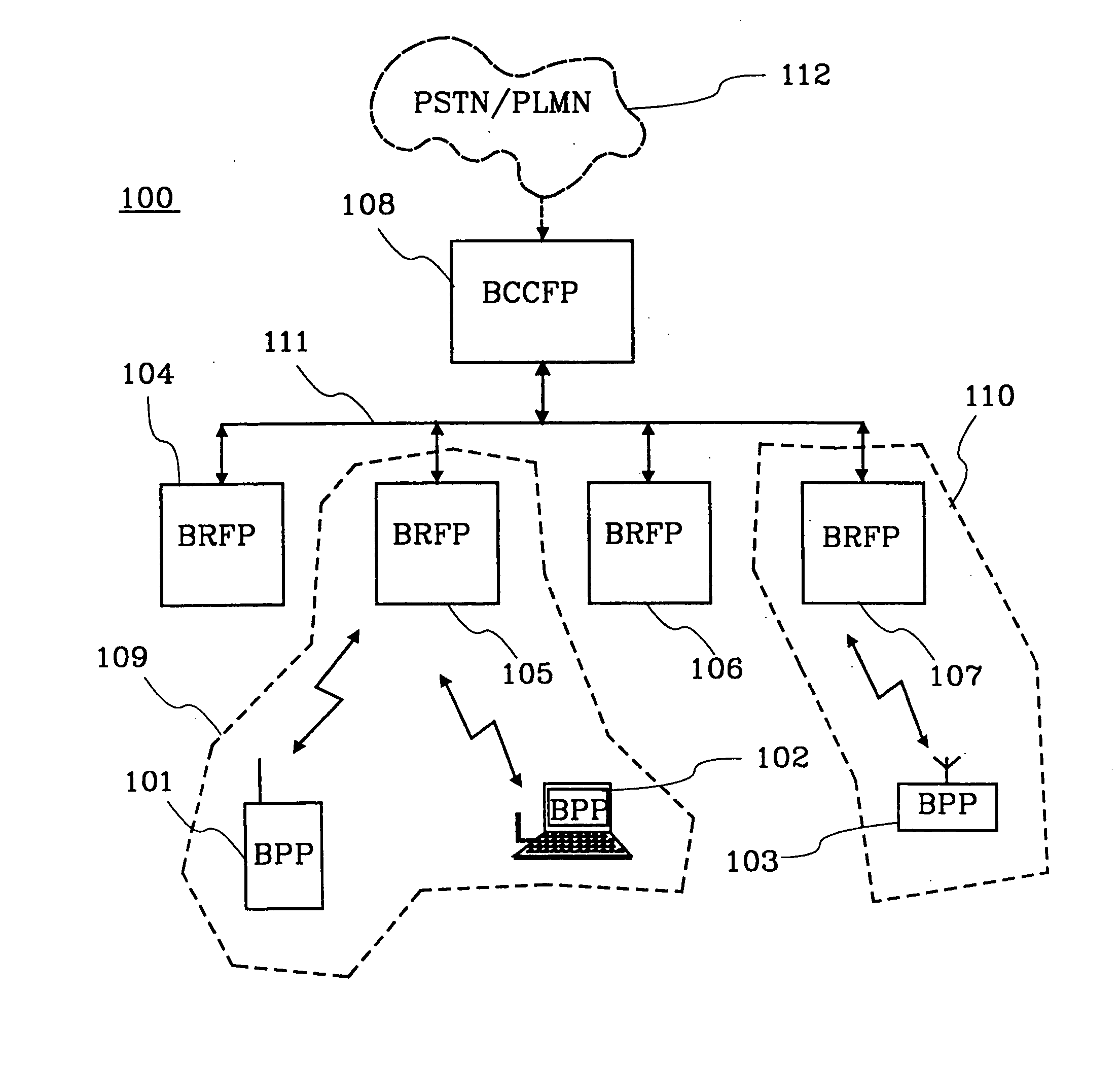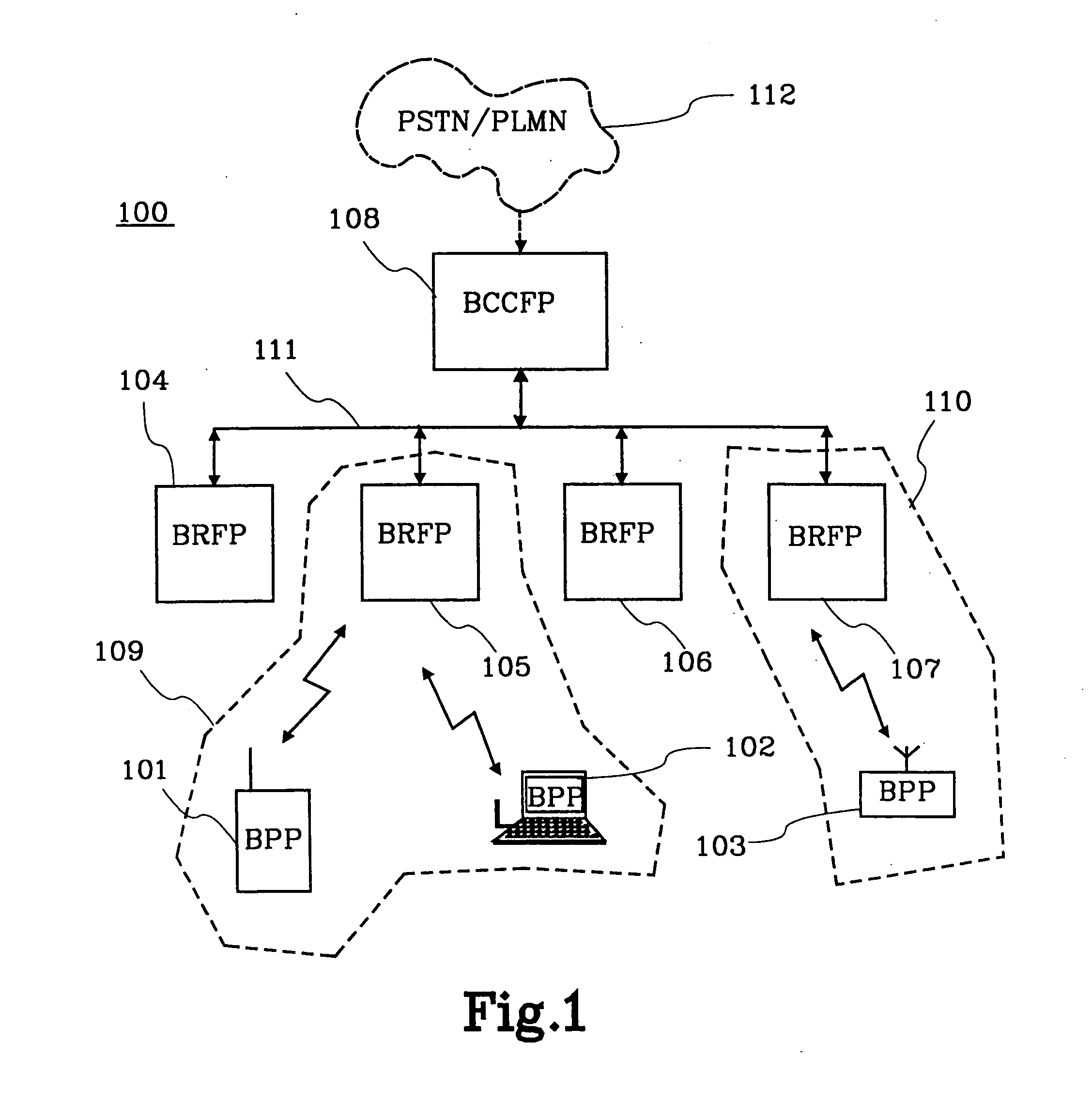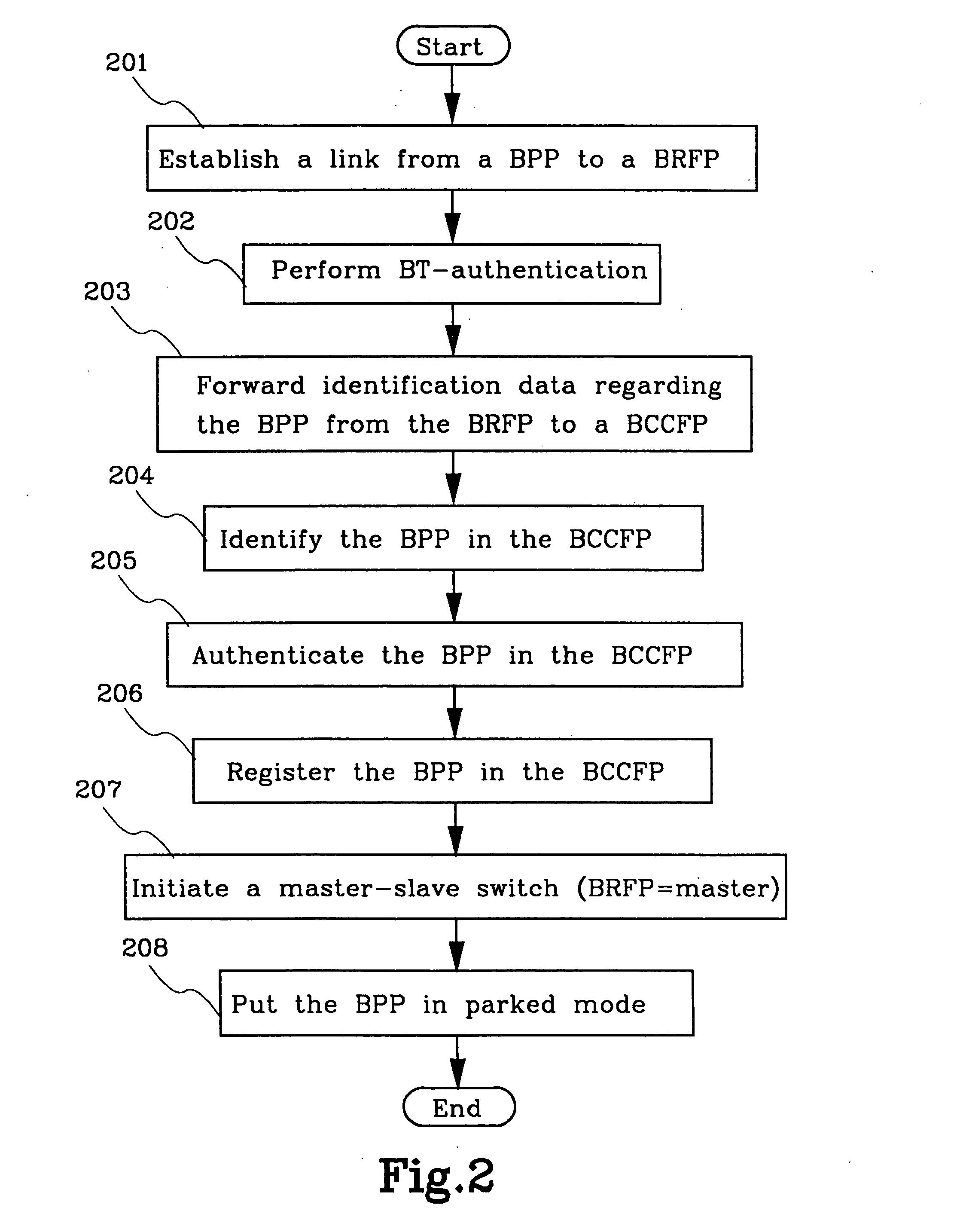Communication system
a communication system and communication technology, applied in the field of radio communication, to achieve the effect of facilitating inter-local radio network communication
- Summary
- Abstract
- Description
- Claims
- Application Information
AI Technical Summary
Benefits of technology
Problems solved by technology
Method used
Image
Examples
first embodiment
[0056]FIG. 1 illustrates a block diagram of a cellular radio communication system 100 for utilising the present invention. The system 100 comprises a control-node (BCCFP) 108 connected to four radio-nodes (BRFP) 104-107 respectively. The BRFP 105 is serving two radio units (BPP) 101, 102 respectively and the BRFP 107 is serving a radio unit (BPP) 103. The BRFP 105 and the two BPPs 101, 102 respectively utilises a radio interface, to enable communication between them, and forms a first piconet 109 (a first local radio network). The BRFP 107 and the BPP 103 utilises the same radio interface and forms a second piconet 110 (a second local radio network). The radio interface used in piconet 109 is not synchronised with the radio interface used in piconet 110.
[0057] The control-node 108 may be connected to a PSTN (Public Switched Telephone Network) and / or a PLMN (Public Land Mobile Network) as illustrated by the dashed cloud 112. The control-node 108 can also be connected to other control...
second embodiment
[0078]FIG. 6 illustrates a flow chart of the second method where the measurements in step 304 and 305 are made during an ongoing call. This means that step 304 and 305 according to FIG. 3 may be replaced by the following steps.
[0079] According to a step 601, the BRFP 105 transmits information to the BCCFP 108 regarding the exact clock information and hop sequence used for the call / link to the BPP 101.
[0080] According to a step 602, the BCCFP 108 forwards the information received in step 601 to the BRFP 104 and 106, i.e. to all additional BRFPs on the neighbouring list for BRFP 105.
[0081] According to a step 603, the BRFP 104 and 106 measures the signal strength and / or signal quality on the ongoing call between the BRFP 105 and the BPP 101, e.g. in a separate receiver in the BRFPs dedicated for monitoring (e.g. measuring).
[0082] According to a step 604, the BRFP 104 and 106 transmits the measured signal strength and / or signal quality to the BCCFP 108 which stores these measurement...
third embodiment
[0083] The steps 601-604 may in the second method (not illustrated) be used as a complement to step 304 and 305 instead of replacing them. This means that steps 601-604 are performed after step 607 in FIG. 3.
[0084] If the link between the BPP 101 and the BRFP 105 becomes bad the second method may continue to perform roaming as the described below (not illustrated in any flow charts).
[0085] The link roams from BRFP 105 to BRFP 104 that, according to the BRFP_candidates list for BRFP 105, has the best signal strength and / or signal quality for the moment (see FIG. 4). This means that the BCCFP 108 selects the new BRFP for roaming with the help of the BRFP_candidates list. This selection may as an alternative or as a complement be made on free capacity in the neighbouring BRFPs.
[0086] If the BPP 101 does not respond to any signalling from the BRFP 104, e.g. a page signal, the second method may end by unregister the BPP 101 as described below (not illustrated in any flow chart).
[0087]...
PUM
 Login to View More
Login to View More Abstract
Description
Claims
Application Information
 Login to View More
Login to View More - R&D
- Intellectual Property
- Life Sciences
- Materials
- Tech Scout
- Unparalleled Data Quality
- Higher Quality Content
- 60% Fewer Hallucinations
Browse by: Latest US Patents, China's latest patents, Technical Efficacy Thesaurus, Application Domain, Technology Topic, Popular Technical Reports.
© 2025 PatSnap. All rights reserved.Legal|Privacy policy|Modern Slavery Act Transparency Statement|Sitemap|About US| Contact US: help@patsnap.com



